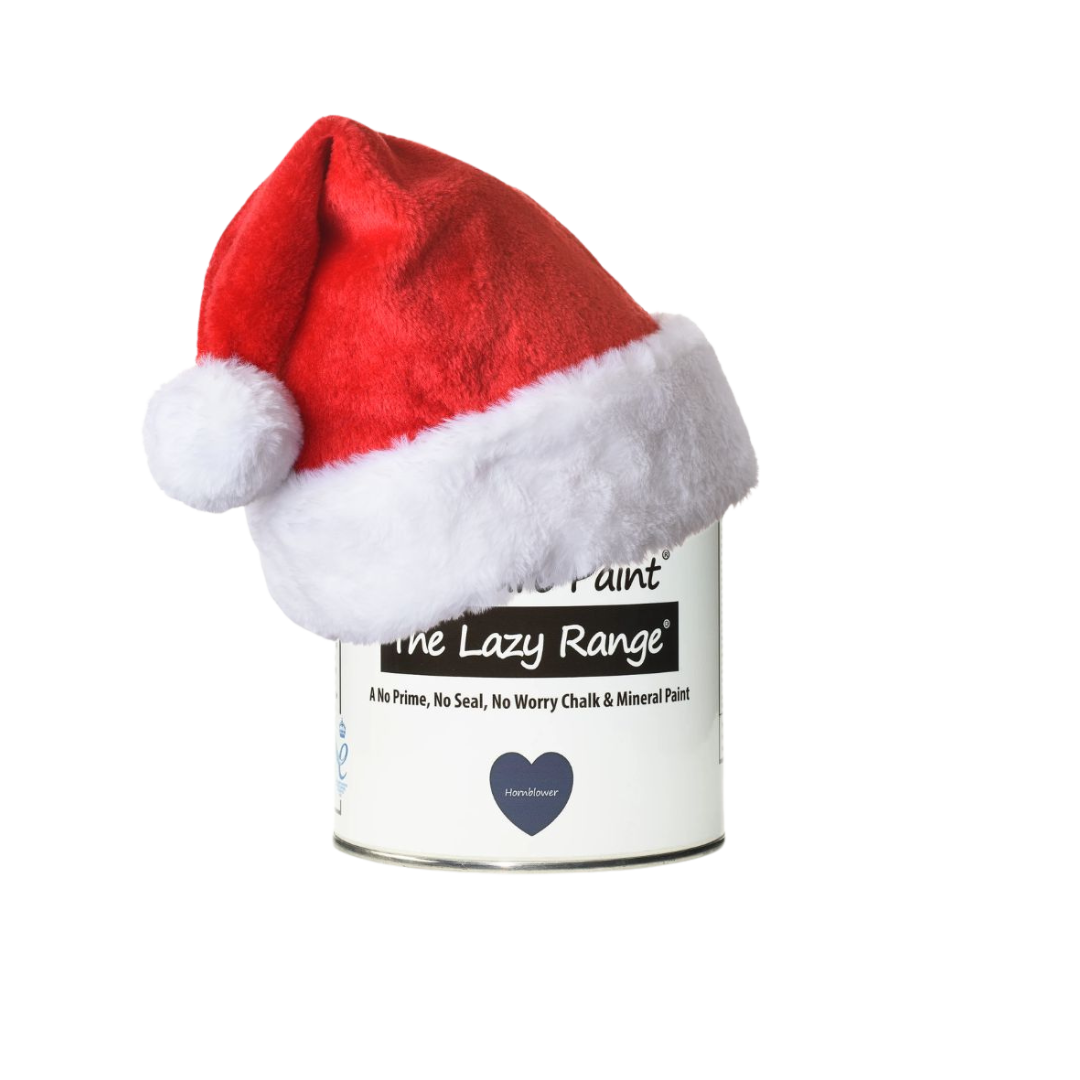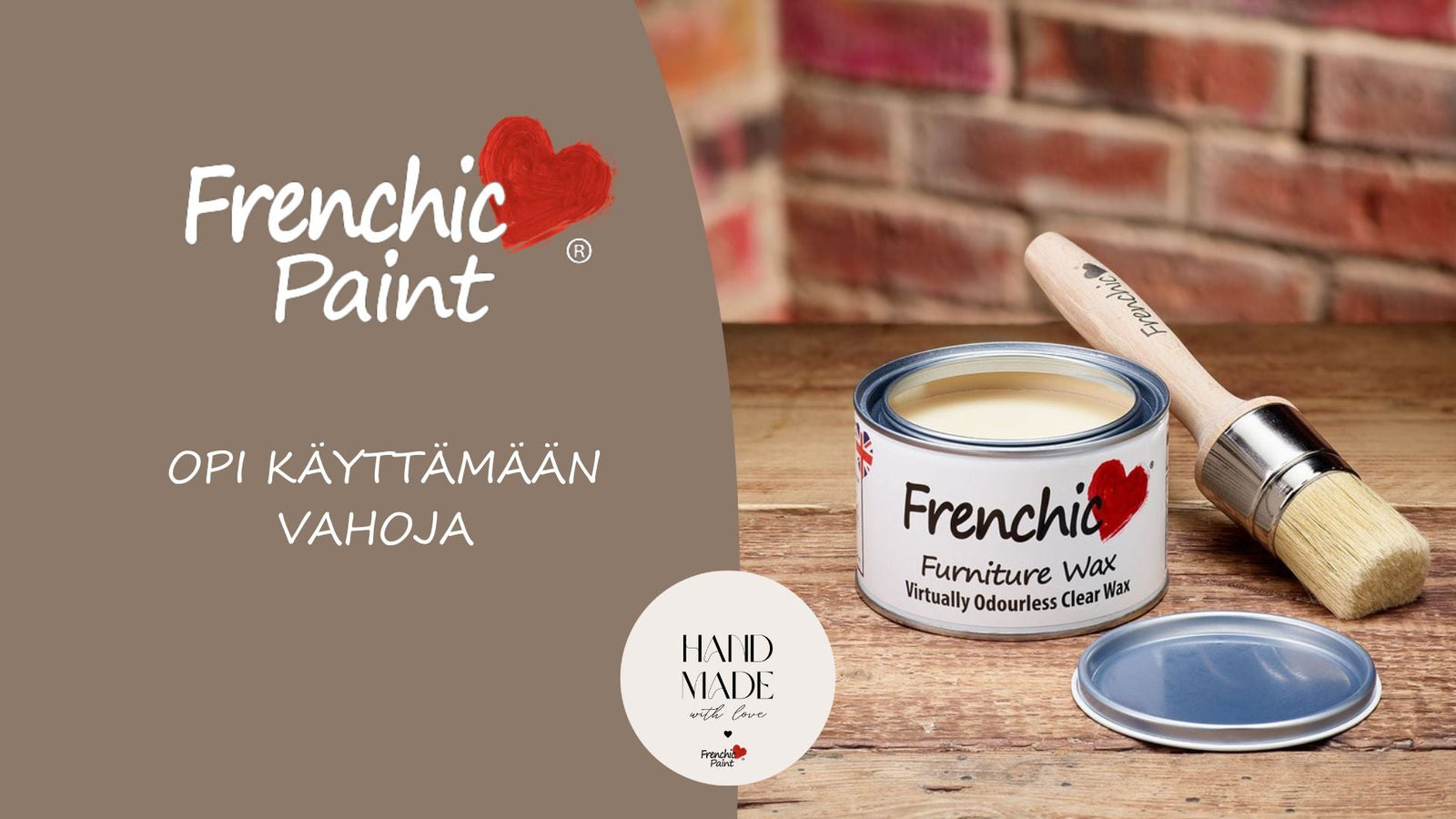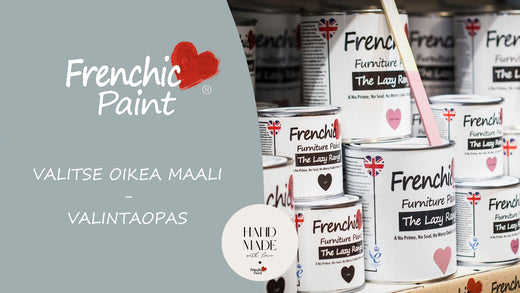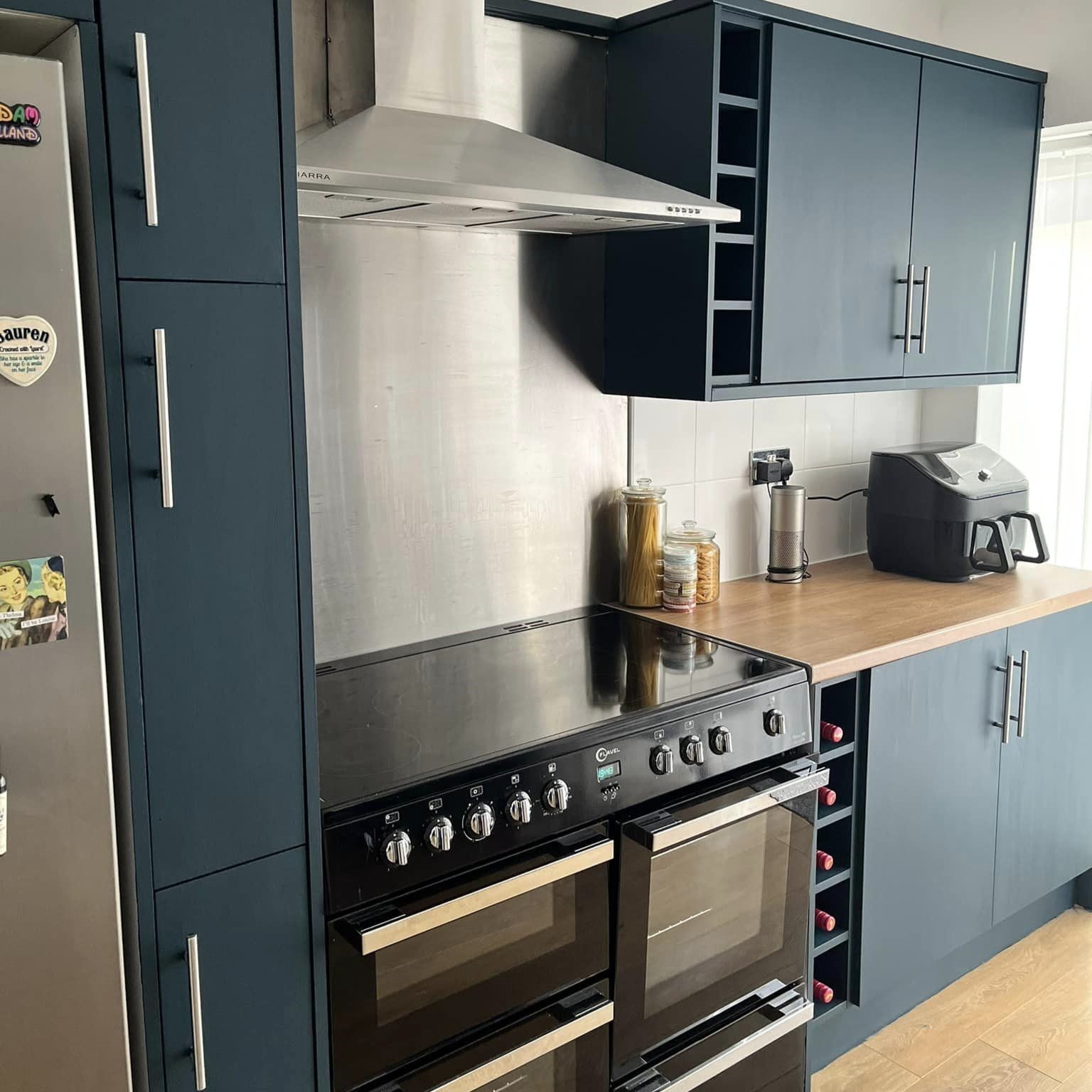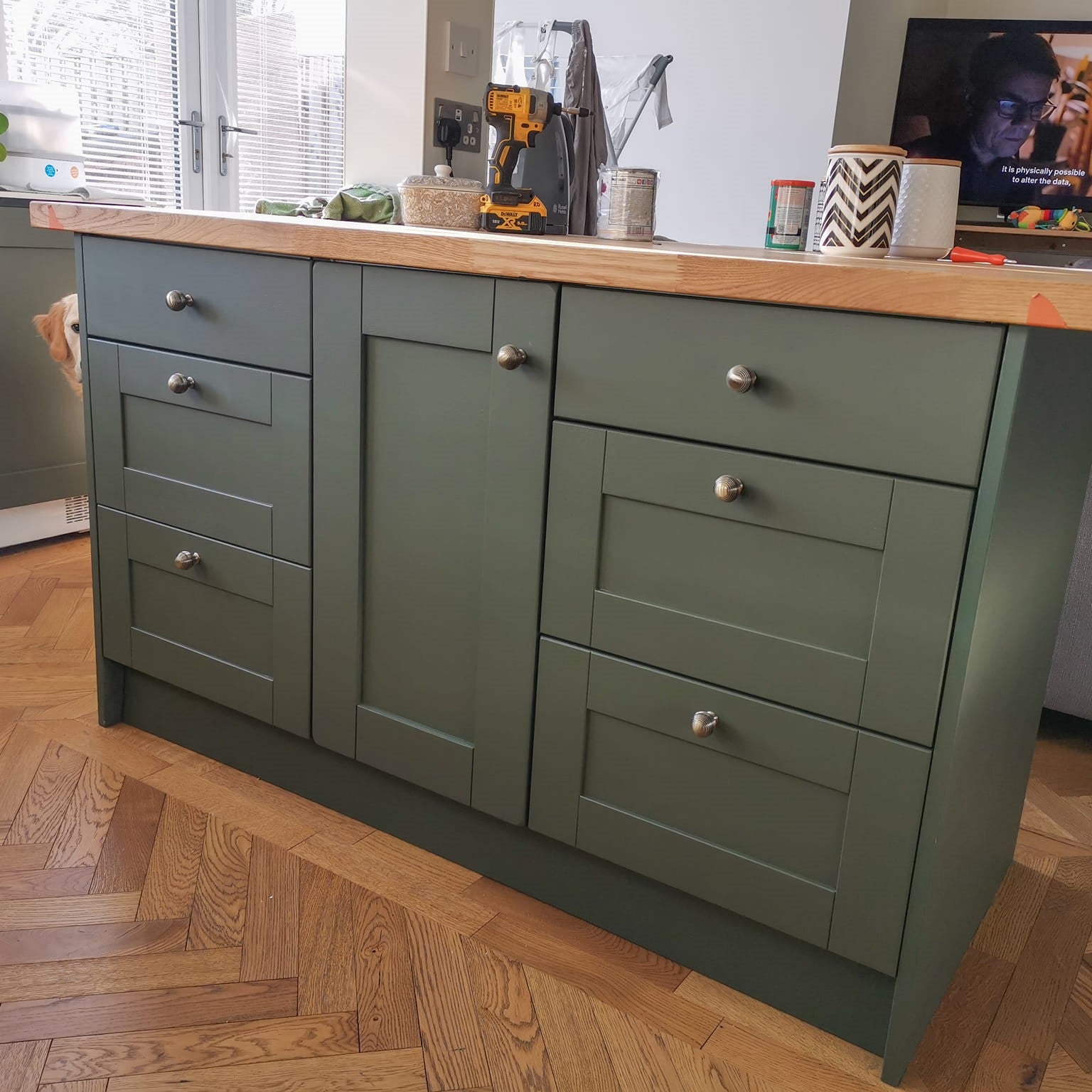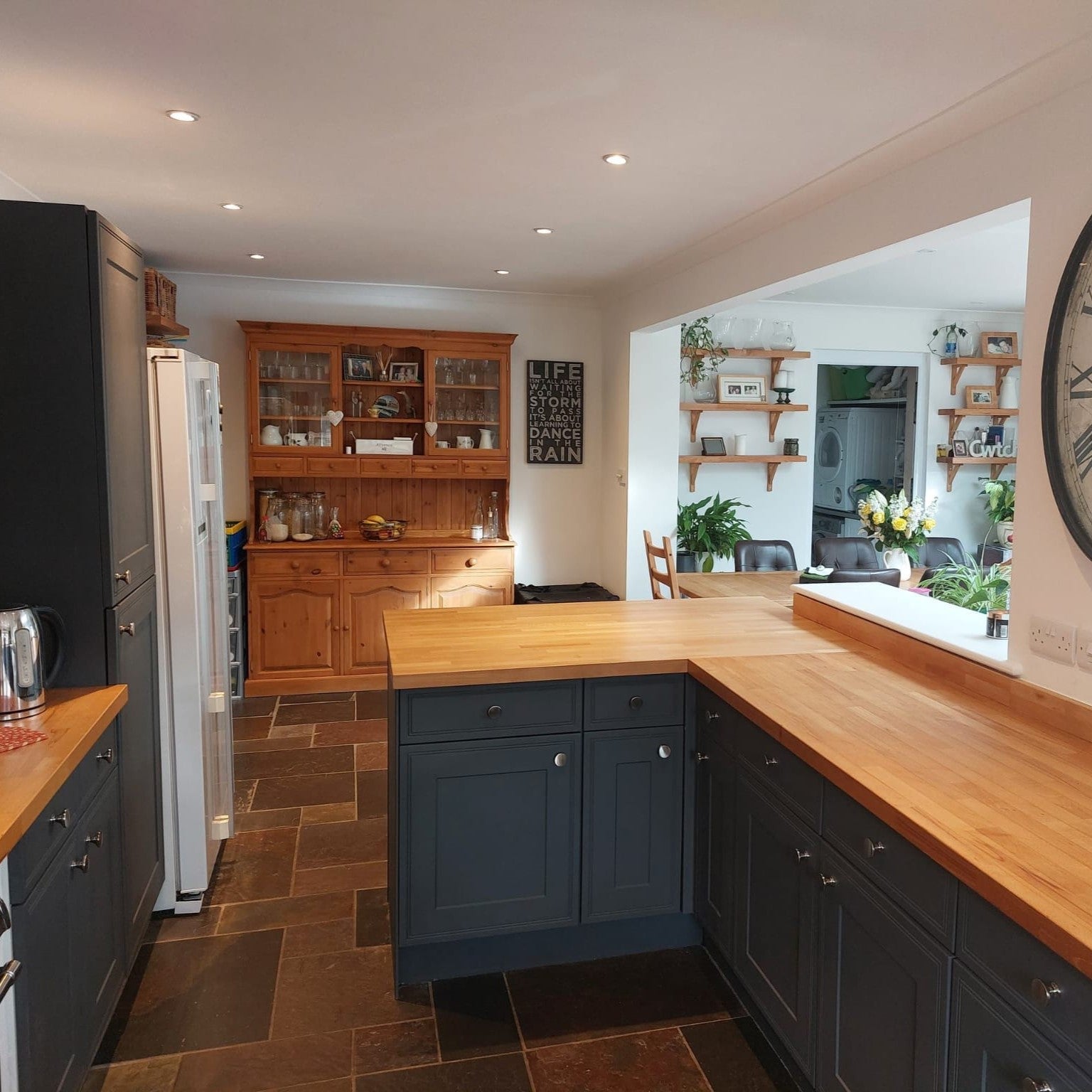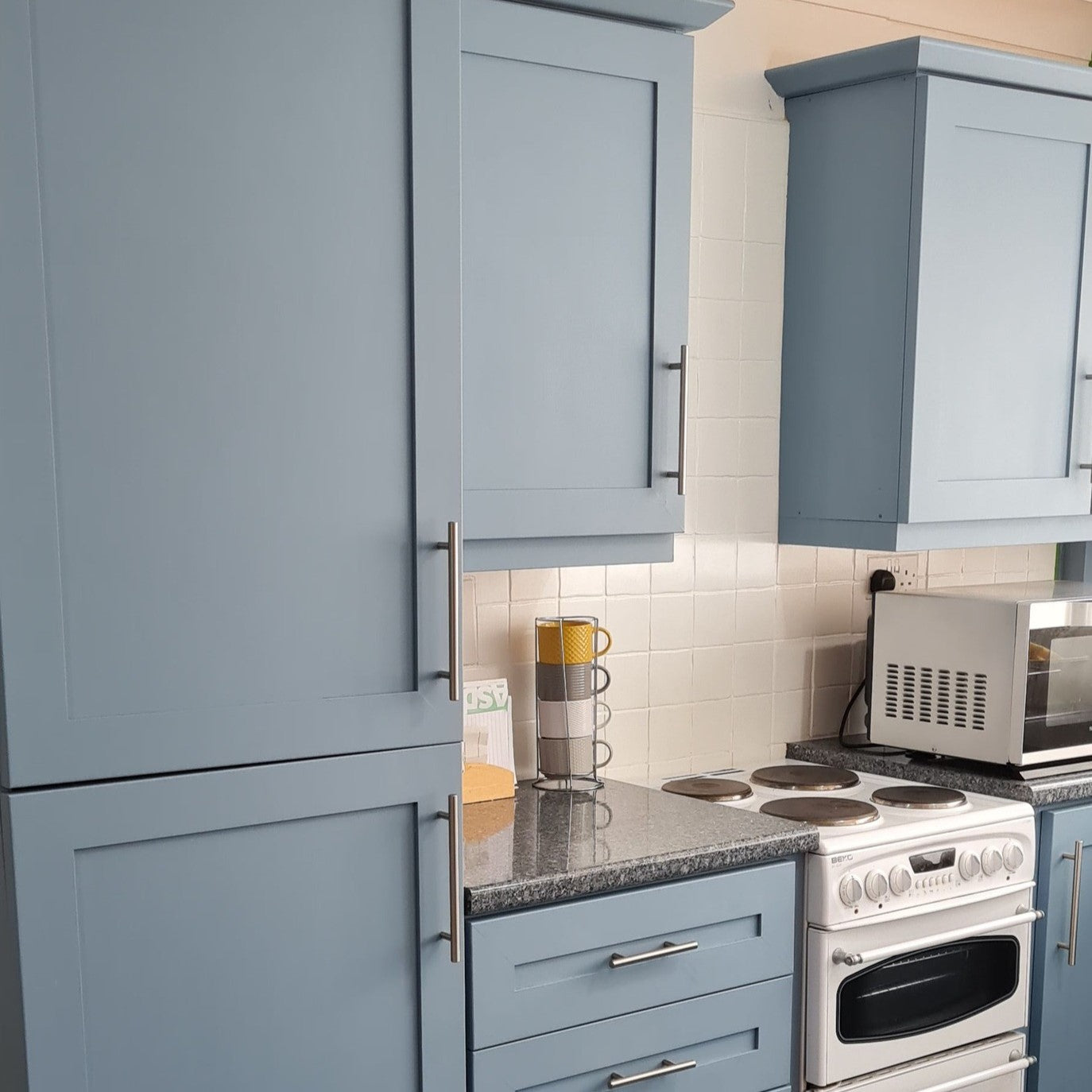Waxes are an important part of painting a unique art piece of furniture
- For caring for the surfaces of antique furniture
- Together with Frenshee metal pigment powder
- For clean wood surfaces
And you can use waxes with all Frenchic series paints.
Waxes are used to create patina and highlight the beautiful decorative carvings of the wood surface.
Read the best tips in this guide for versatile use of Frenchic waxes
We also reveal to you a professional tip, a secret on how to always succeed with waxes, you will learn the 'Two Wax Technique' and learn the popular Frenchic wax hack on how to lighten dark log beams and much more useful information!
With waxes, you finish and protect the beautiful painted surface, but also create stunning effects
The idea and beauty of chalk painting is to create different layers and use different techniques - it's easy to fall in love with using waxes! With waxes, you highlight grooves, scratches, cracked paint. You create beautiful highlights and depth elsewhere.
You can also use Frenchic series natural waxes on new clean wood surfaces as well as for caring for wooden and antique furniture surfaces.

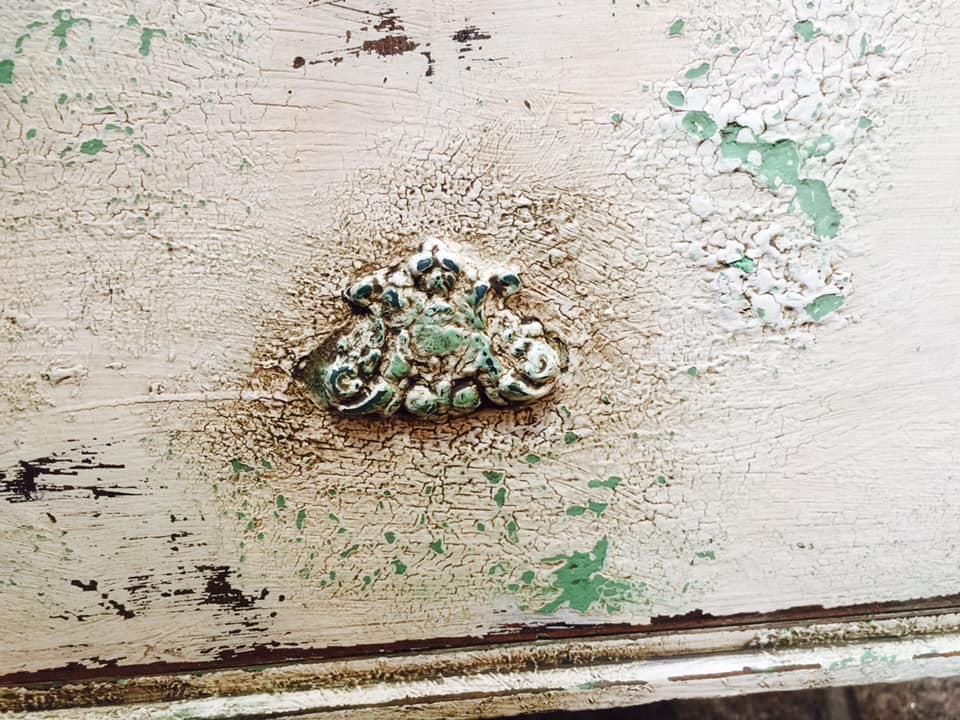
This picture shows two different Frenchic waxes used: brown and clear. Paint shades: Apple of My Eye, Al Fresco and Wedding Cake, Lazy Range.
Use a wax brush for waxing
Wax is rubbed into the chalk paint surface with a circular motion using a wax brush designed for this purpose. The circular motion leaves a beautiful natural mark on the surface.
On flat, large surfaces, the chosen application method stands out. If you want the smoothest possible wax surface and finish, apply wax following the wood grain.
You can load a lot of wax onto the brush, but any excess wax that has not absorbed into the chalk paint should always be wiped off with a cloth. The goal is thin, beautiful layers. Wax gives a beautiful matte finish to the painted surface. If you wish, you can polish the wax with a cloth about 24 hours after drying.
If you choose a waxed paint from the Frenchic series, from the Lazy Range, you do not need wax to protect the paint surface, but you can still use waxes to add patina and protect worn areas.
You can apply wax over the paint surface just for its unique, matte sheen.
Add your own patina and wear
Chalk Paint / the basics of chalk painting lie in layering and combining different techniques. Layering makes the work interesting and personal - more multidimensional than furniture painted with just one shade, like traditional furniture painting.
When you look for inspiration online, you will surely see many beautiful painted furniture pieces with stunning blended shades and depth in the furniture's doors, drawers, and side panels - this kind of result is made using multiple layers of paint and different waxes.
Colored waxes are an easy way to add three-dimensionality, highlight edges and corners, and add age, patina, and character even to newer furniture. Wax highlights the texture of surfaces.
When you create a worn surface and sand the paint open here and there on your furniture, wax the entire piece at the end. This way you protect the worn-open spots.

Brown waxes are usually used to add dark patina and a sense of depth over chalk paint: use on the edges of drawers and doors to highlight the three-dimensionality of the area. Brown wax darkens and slightly changes the shade of the color. The result is a rustic and patinated surface. Try mixing golden or green Frensheen metallic pigment powder into the wax - the result is a stunning shimmering wax.
Clear wax is the foundation of everything. Use it in the two-wax technique and when creating new wax shades. Add a drop of paint to clear wax and you have endless wax shades at your disposal.
Gray waxes work wonderfully over white and light chalk paints. Wax makes it easy to highlight furniture's decorative carvings, dents, and grooves. Gray wax also changes the color slightly, but less than brown. The result is stylish and lightly patinated.
White wax tones down the color "tip" of the chalk paint shade and creates a gauzy, misty lightness on the surface - sometimes the surface gets a slightly fabric-like texture. With white wax, you add beautiful "highlights" to the furniture. Try white Frenchic wax in Boho style to bleach yellowed rattan furniture or basket surfaces.
Sticky surface?
Frenchic waxes do not leave a sticky surface - the series' waxes are easy to apply thinly because their texture is soft and easy to work with. A sticky surface is a wax layer that is too thick.
The secret of using colored wax
Colored waxes are not meant to "paint" opaquely or thickly, but with light layers to create a thin shade that highlights edges and grooves. The best result comes from several thin layers - let the surfaces build up patiently and examine the surface from different angles and a bit from afar during the project.
The secret to thin layers is to apply wax generously at first and then wipe off the excess. Try it and you will notice the benefits of this technique.
If you create wear on a chalk paint surface by sanding it through, wax the surface again after sanding, either only on the worn areas or the entire painted surface. Colored waxes are also applied with a wax brush, and excess wax is always wiped off.
If you wax a porous surface; wood or traditional chalk paint - the secret to an even finish when using colored wax is the two-wax technique.
Two-wax technique
Example: Waxing the front panel of the box when you want depth and three-dimensionality
The surface is painted with traditional chalk paint in the natural white Sugar Puff shade, and the intention is to create an old, worn, and patinated look on the front panel of the box, adding depth effect with brown wax.
- Apply a thin layer of clear wax over the dried chalk paint surface – wipe off the excess
- Apply brown wax generously over the entire box area with a wax brush
- Wipe and fade away excess brown wax – start wiping from the center using a cloth with clear wax added. Leave more brown color on the outer edges and remove brown wax with a circular motion mostly from the center of the box using the wax cloth – the center will thus be lighter than the edges.
- Wipe off excess wax lightly from the surface of the box. Because clear wax is underneath, you can work the brown wax as long as you want, and the brown wax won't absorb unevenly. Add with a brush and remove with a wax cloth – repeat until you are satisfied.
Clear wax on a cloth works like an eraser – when you want to remove or fade colored wax. This technique only works if you have applied a layer of clear wax underneath. – Try it and you'll fall in love with waxes and their versatility!
Are you using traditional chalk paint but not using clear wax under colored wax?
Then the wax will probably absorb quite unevenly into the porous paint or wood surface, and it can no longer be corrected. The result may look blotchy, streaky, or otherwise uneven, depending on the technique used to apply the wax. Clear wax is the foundation for all traditional chalk paint waxing.
It's always worth having a jar of clear wax in the paint stock for a diligent chalk painter. Try it – you'll really notice the difference in how easy the wax is to work with. Frenchic series waxes are flexible and non-toxic natural waxes, and they are pleasant to work with. Only by trying will you notice how Frenchic waxes differ from other waxes!
Wax brush or cloth? Both
Wax brush is an absolutely superior tool for waxing – compared to the clumsy and slow work with a cloth.

Consider investing in wax brushes; it's good to have a separate brush for each wax shade to prevent colors from mixing due to dirty brushes. You can't wax the entire piece of furniture with a soft paintbrush – waxing requires stiff bristles that allow the wax to be rubbed onto surfaces, decorations, and grooves easily and lightly.
For precise waxing of small details and grooves, you can use a narrow and softer brush. Waxing is a quick and pleasant finishing step, especially when your tools are the right ones and the furniture wax you choose is soft to work with. Try different tools to find the best way to work for you and notice the difference between tools.

Waxing with just a cloth is really laborious and slow. You only need a lint-free cloth to remove the excess wax.
Thin layers - 'wax on - wax off'
Wax is applied generously to the surface, rubbed into the lime paint or wood surface, and the excess is always wiped off. This way, the wax surface becomes even and beautiful, and also dries evenly. You only need a lint-free cloth to remove the excess wax.
A circular motion when applying wax helps achieve a natural finish and allows the wax to get into all crevices and grooves more easily. Horizontal strokes when applying wax can leave a 'striped' finish, especially if you use dark wax without adding a clear wax layer underneath - the two-wax technique.
You can add a few thin layers, but always let the previous layer dry for 30 min - 1h before the next layer. Additional layers, especially with colored waxes, emphasize the wax's own shade.
A layer that is too thick easily remains sticky and never seems to dry - thick wax layers are unpleasant on surfaces of frequently used furniture.
Wax can be removed with alcohol, e.g. sprit, and mechanically by scraping. If you haven't waxed before, do a small test first.
You can find technique videos and more useful project pictures of the Frenchic series waxes in the series's own FB group.
Antique or bare wood surface
When waxing bare wood, the wood surface is 'saturated' with wax, adding layers until the wood no longer absorbs wax. Waxing is repeated regularly over time, as needed and according to wear - the need for waxing decreases with age and years.
Different wood species absorb wax differently. Natural waxes, like Frenchic waxes, care for the wood surface and beautifully highlight the wood grain. Antique furniture can also be cared for by waxing if it has been waxed before.
Furniture painters and other craftsmen love the wax's beautiful, silky sheen on paint or wood surfaces.

Even a new wooden surface can be made to look old with waxes
Try how a new wood surface looks just like old Al Fresco wood when waxed with gray wax. An ordinary raw board easily turns into "old barn wall board" with gray wax. Brown wax, on the other hand, brings a plank-like look.

Yellowed birch or pine surface, furniture or panel walls, ceilings or doors are easily refreshed with white wax, leaving the wood grain beautifully visible. You can also wax log surfaces, various panels, doors, moldings, new or old furniture.

Image: waxing of a yellowed panel with white Frenchic wax.
Highly popular Frenchic hack - lighten the surface without sanding!

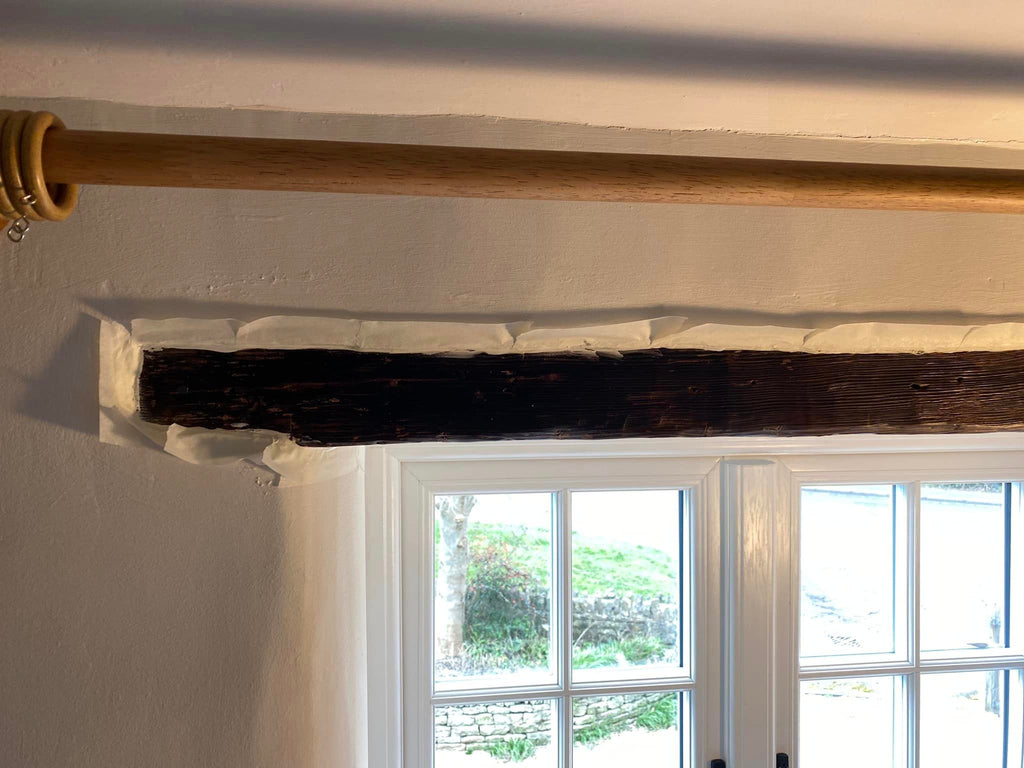



Image: lightening of dark beam: "Creme de la Creme" and brown Frenchic wax.



Where is wax suitable and where is it not?
Wax is not suitable for outdoor use, nor does it withstand constant wiping with detergents. Therefore, wax is not recommended for kitchen countertops (kitchen tables) or moist areas such as saunas.
When wax is mechanically applied to the surface, it is one layer in addition to the paint layers. Wax is always the final surface. Keep in mind that a self-applied wax layer wears down in use when you choose chalk paint and painting technique. Also consider what kind of wear the surface or furniture will have for you and whether you are ready to maintain it regularly.
For example, the kitchen table top; if you wax the top of a kitchen table painted with traditional chalk paint, the clear wax wears off unnoticed in areas of heavy use: for example, the children's spot - this area of the table is wiped often. Does someone lean their elbows on the table at their spot? The wax wears off unnoticed there, and when some grease/liquid gets on the worn areas of the table surface, dirt soaks into the chalk paint and no longer comes off.
The kitchen table is one of the pieces of furniture that undergoes heavy use and varies in each family. It is also wiped often, and wax dissolves in detergents and alcohol. Wax added to the chalk paint surface of a kitchen table or bar tops is not the best option if you are not prepared to regularly reapply wax and clean the surfaces only with mild cleaners.
A clean wooden surface saturated with wax is an option for a kitchen countertop because the wax then penetrates deep into the wood and protects the surface thoroughly. Clean the surface only with mild detergents and re-wax the surface as needed. Always protect the waxed surface from hot dishes with trivets and coffee cup coasters.
Instead of wax, you can treat countertops and tabletops with a matte 'Tuff Top Coat', which withstands wear and wiping well and does not wear down in use like wax.
Surface treat according to wear
For furniture and surfaces subject to heavy wear, it is advisable to choose a high-quality chalk paint that already contains wax in the paint. Waxed chalk paint, Lazy Range, does not allow dirt to penetrate once dry, and its surface can be wiped with a damp cloth or mild detergents. The wax in the paint hardens into a surface resistant to wear.
Wax removal
Wax layer removal can be done with spri (alcohol-based cleaner) or by heating and mechanically scraping the surface clean. Painting over a waxed surface is not recommended because water-based paints repel greasy surfaces - the new paint layer may crack or craze.
On the other hand, painting over wax is a painting technique that achieves an aged-looking surface.
Paint that already contains wax is different from a separate wax layer. You can paint well over waxed lime paint, Lazy Range shades.
Choose natural wax
It's good to know a few basics about waxes before choosing the right one for your project. There are several different waxes on the market; some contain solvents and other synthetic or toxic ingredients, some waxes have a strong smell. Some waxes are thick and stiff - they are difficult to work with and apply thinly, which may result in an unsatisfactory finish.
You can quickly tell from the side of the wax jar whether it is a safe product; warning labels are found on the jar if the product is toxic.
If you haven't used waxes before, choose a softly spreading natural wax for your project. For example, Frenchic series waxes are natural waxes; they contain beeswax and carnauba wax (Brazilian palm tree). It's easy to fall in love with using quality waxes, and after trying, you will understand well the importance of layering in chalk paint-style furniture painting.
Bee wax-based Frenchic waxes and the series' quality wax brushes are also suitable for restoration projects and professional use.
Waxed lime paint and wax
Yes, you can and should use furniture waxes with waxed lime paint.

They create interesting layering, three-dimensionality, and the same patina and wood decoration highlighting as with traditional chalk paint - colored waxes finish your furniture - protective properties are already present in the durable waxed lime paint!
You can explore the waxed paints of the Frenchic series, Lazy Range series here and the Frenchic series waxes here.
Take good care of your quality wax brush - wash the wax brush with warm water and mild detergent. Quality Frenchic brushes last for years even in heavy professional use when properly maintained.
Frenchic waxes are not self-igniting and are solvent-free.
The Frenchic series waxes have been awarded the European 'Toy Safe' certificate, so you can safely use them on children's furniture as well.
Join your local Frenchic retailer's Frenchic courses or stop by the nearest store to ask for more instructions for your own project.
Have a nice painting day!
